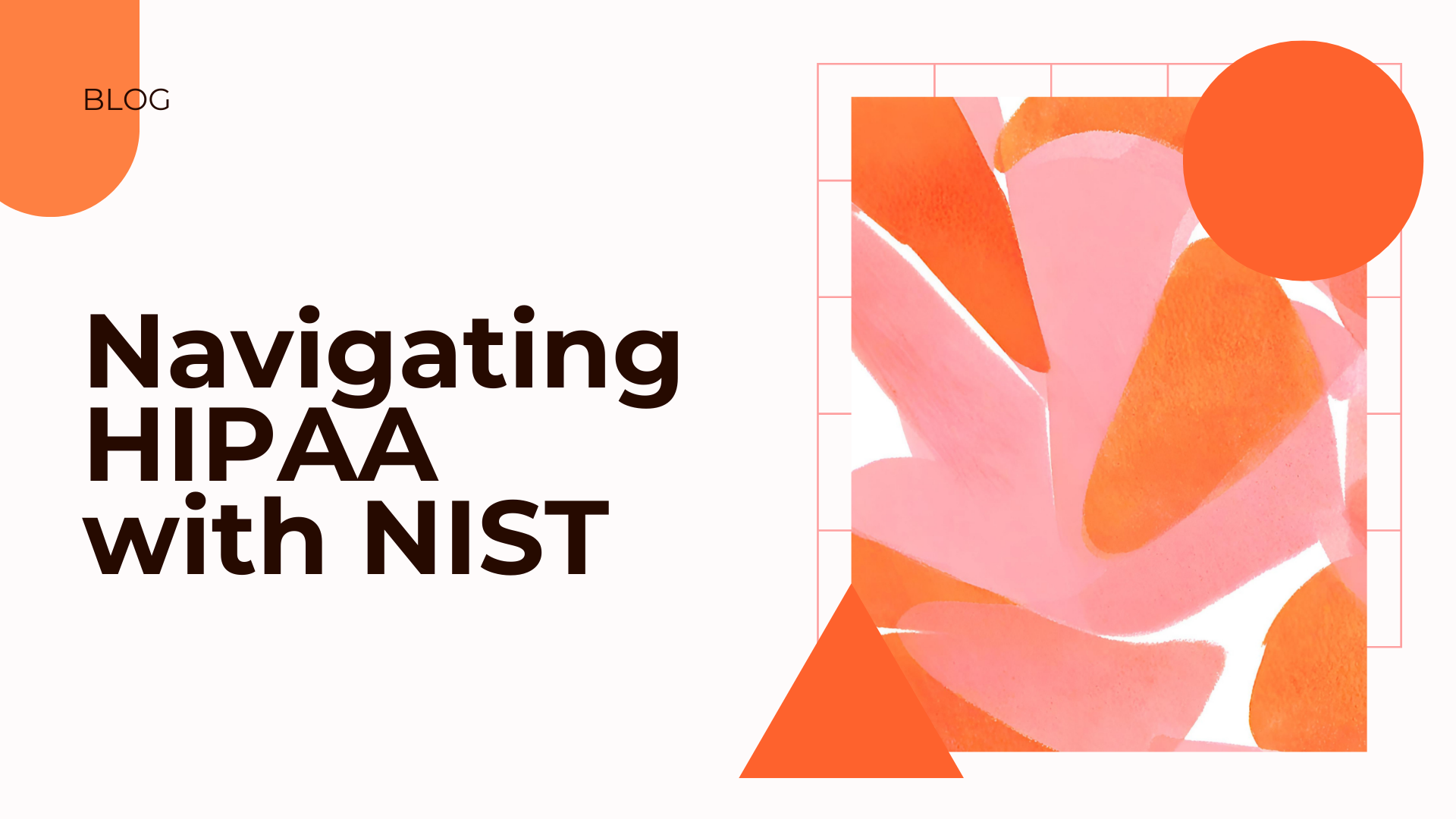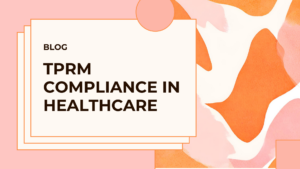HIPAA Compliance With The NIST Cybersecurity Framework
In the age of digital transformation, people are more conscious of their personal data than ever before.
When it comes to personal data, none is more important than a person’s health records. A long-lasting effect of the pandemic is that more healthcare appointments are carried out virtually, leading to an explosion of digital patient records.
Healthcare organizations are legally obliged to protect these records, with the Health Insurance Portability and Accountability Act (HIPAA) laying out crucial rules for keeping healthcare information.
Changes to the law made at the start of 2021 mean that healthcare institutions are incentivized to follow a set of guidelines.
The HIPAA Safe Harbor Bill gives businesses a set of generally accepted cybersecurity standards that ensure they are following best practices. The benefit of following these rules is that healthcare companies can avoid extra scrutiny by regulators and potentially face smaller fines if a data breach occurs.
The National Institute of Standards and Technology has created a cybersecurity framework that guides organizations through these standards.
What Is HIPAA?
HIPAA was initially enacted in 1996 with the purpose of protecting patient records through the standard workflow of data sharing.
Patient records are shared more than the average person might think, often for the benefit of the patient’s care but also for studies and research.
A crucial component of HIPAA is its data redaction requirements.
Healthcare businesses need to redact documents they share both internally and externally to ensure individuals cannot be identified and their privacy is maintained. This presents a challenge for institutions for many reasons. These documents are often stored in a multitude of
places – across various departments and clinics – making it tricky to stay on top of what needs doing.
The Safe Harbor element of the law is designed to give guidance to businesses that help them stay within HIPAA, therefore showing a demonstrable willingness to be compliant.
What Is The NIST Cybersecurity Framework?
The National Institute for Standards and Technology has developed a framework to help people stay within HIPAA’s Safe Harbor.
The framework is made up of three main sections: Core, Implementation Tiers, and Profiles.
Each section is designed to guide healthcare organizations on their way to HIPAA compliance.
The Framework’s core is a set of actions that help manage cybersecurity and everyday risk associated with data protection. These are:
- Identify: look for opportunities to improve cybersecurity
- Protect: proactively secure data and train employees appropriately
- Detect: be on the lookout for anomalies
- Respond: act on detected anomalies to keep data protected
- Recover: move beyond a cybersecurity incident
Each of the five sections is broken down into 23 subcategories that are clearly defined on the
NIST website.
Implementation tiers help healthcare organizations ensure they are actually following the guidelines laid out in the framework. The tiers range from one to four, with four being the most stringent compliance across the broad risk management structure.
NIST stresses that the tiers do not necessarily reflect cybersecurity maturity; it’s more a case of each individual organization deciding on what tier best reflects their needs.
Profiles refer to a healthcare business’ individual positioning of objectives and risk desire when laid out against the desires of the Framework Core. NIST says the businesses must assess their “current” profile and compare it to their “Target” profile, which is their ultimate goal.
What are the benefits?
The benefits are clear for healthcare organizations meeting HIPAA Safe Harbor with the NIST Cybersecurity Framework.
Following the framework’s guidance demonstrates a clear desire to protect data and strive for the best standards possible. This effort will be reflected should an issue ever arise. And the likelihood of an issue arising is only going to increase, with more of our data being digitized and cybercriminals smelling opportunities to make some quick money while threatening businesses.
The HIPAA changes brought in last January incentivize businesses to follow the Safe Harbor guidance.
Healthcare firms will receive favorable treatment if they can prove that they have adhered to the framework’s rules.
Huge fines can be leveled at businesses that fail to comply with HIPAA. However, organizations that suffer a breach but can show they did their best to avoid such issues can expect their fine to be lower than that received by a business that is deemed negligent.
For healthcare organizations with a genuine desire to protect patient data, the NIST Cybersecurity holds two key benefits. Firstly, the guidance will genuinely improve their practices and help to mitigate the risks posed by cyber criminals and genuine human error related to personal data. Secondly, clearly following the rules and documenting progress shows regulators that the institution has done its best to avoid issues, even in the event that something goes wrong.
HIPAA Safe Harbor: What Businesses Need to Know
The Health Insurance Portability and Accountability Act (HIPAA) requires healthcare organizations to safeguard patients’ protected health information (PHI) and abide by strict regulations to ensure the confidentiality, integrity, and availability of such data. However, even the most diligent healthcare providers may experience a security breach that exposes patients’ PHI to unauthorized parties, which could lead to financial and legal consequences. That’s where the HIPAA Safe Harbor comes into play.
The HIPAA Safe Harbor is a method for healthcare organizations to protect themselves from HIPAA fines and penalties by encrypting or de-identifying patients’ PHI in the event of a security breach. Essentially, the HIPAA Safe Harbor rule acknowledges that if PHI is encrypted or de-identified, it is not subject to the same level of scrutiny as non-encrypted or non-de-identified PHI, as it poses less risk to patients’ privacy and security.
Here’s what businesses should do regarding the HIPAA Safe Harbor role:
Know if you are subject to HIPAA regulations
The HIPAA Safe Harbor rule only applies to healthcare organizations and their business associates that handle PHI. If your business doesn’t fall under the HIPAA umbrella, the Safe Harbor rule does not apply to you. However, if you are a business associate of a healthcare organization, you may be subject to HIPAA regulations.
Implement encryption and de-identification methods
To benefit from the HIPAA Safe Harbor rule, healthcare organizations must implement encryption or de-identification methods to PHI. Encryption involves converting the PHI into an unreadable format that can only be deciphered with a specific key. De-identification involves removing any information that could identify the patient, such as name, address, and Social Security number. Implementing these methods can significantly reduce the risk of data breaches and provide Safe Harbor protection.
Regularly review and update security policies and procedures
While encryption and de-identification are powerful tools, they are not foolproof. That’s why it’s essential for healthcare organizations to regularly review and update their security policies and procedures to ensure they are up to date and aligned with the latest security practices. Additionally, employees should be trained on the importance of safeguarding PHI and how to report security incidents promptly.
Have a response plan in place
Despite best efforts to prevent security breaches, they can still happen. Therefore, healthcare organizations must have a response plan in place to deal with any potential incidents quickly and efficiently. This plan should outline who to notify, how to investigate an incident, how to contain a breach, and how to minimize the impact on patients and the organization.
Leverage solutions like Papaya to streamline your HIPAA compliance
The Papaya Security Framework emerges as a valuable tool for organizations seeking HIPAA Safe Harbor compliance. By serving as an overlay of the NIST Cybersecurity Framework, the Papaya Security Framework provides healthcare institutions with a streamlined, comprehensive approach to managing cybersecurity risks while adhering to HIPAA regulations. To harness the full potential of this framework, organizations should start by familiarizing themselves with the Papaya Security Framework’s key components and understanding how it complements and enhances the NIST CSF. Next, they should evaluate their current cybersecurity posture and identify areas where the Papaya Security Framework can help improve their risk management practices. By leveraging the Papaya Security Framework in conjunction with the NIST CSF, healthcare organizations can bolster their cybersecurity strategies, protect sensitive patient data more effectively, and demonstrate a strong commitment to HIPAA Safe Harbor compliance, ultimately reducing the likelihood of regulatory scrutiny and financial penalties in the event of a data breach.
The HIPAA Safe Harbor rule provides a crucial lifeline for healthcare organizations that experience security breaches involving PHI. By implementing encryption or de-identification methods, regularly reviewing and updating security policies and procedures, and having a response plan in place, businesses can protect themselves from significant financial and legal consequences while also safeguarding patients’ privacy and security.




